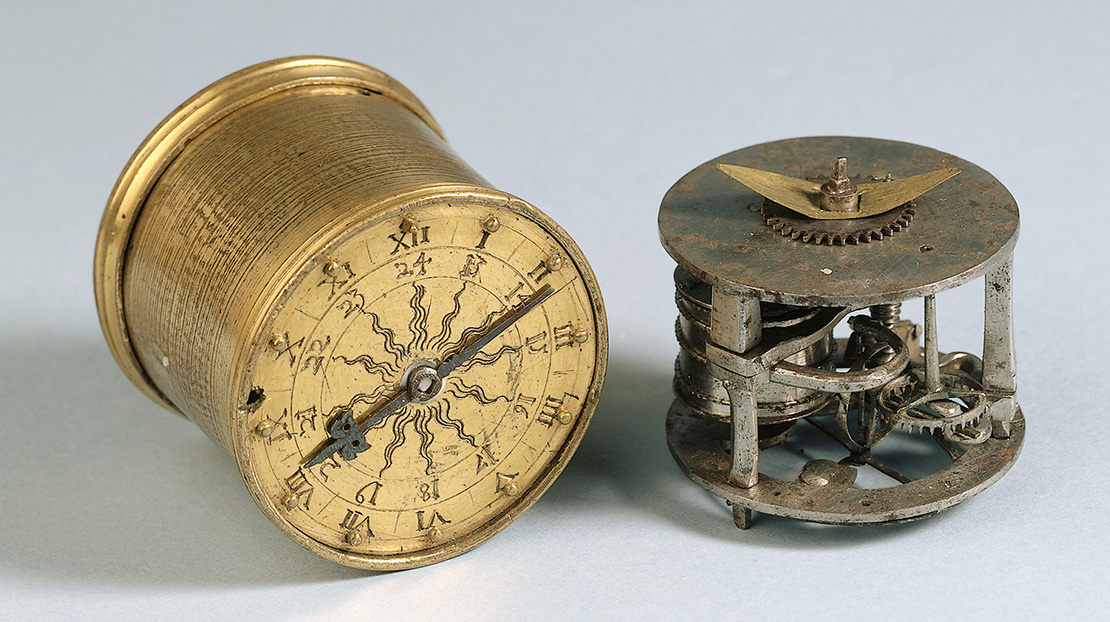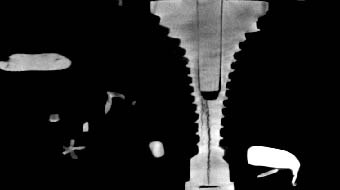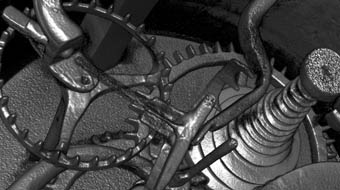The Henlein pocket watch dispute

Is the Henlein pocket watch really the "oldest pocket watch in the world"?
Projectduration: March 2013 - December 2014
Project Sponsorship: Staedtler Stiftung
For decades, experts have been disagreeing about whether the famous "Henlein pocket watch" in the GNM really is the oldest preserved portable watch in the history of technology. Other small-scale watches from the early 16th century also stake claim to this title or are – like the Henlein pocket watch – suspected forgeries. In total, around five watches are under discussion here.
From December 2014, a special exhibition will be dedicated to these fascinating examples of past timekeeping technology and will attempt to go some way towards resolving the argument.
An object-based comparison of the watches in question, and in particular their mechanisms, is an essential element of the preparatory research. The watch mechanism, usually hidden by the casing, is where the real innovations lie. Since 1510 or so, this has made for pocket-sized timekeeping devices: which can be transported "in a pouch or purse," as a contemporary source enthused. But how can these microscopically small movements and chiming mechanisms, which are also highly inaccessible for photography, be systematically recorded and uniformly compared when they are located far apart in different museums and private collections? Not least because their components interact in three dimensions.
Historical technological research is supported here by 3D micro computer tomography, which can produce high-resolution, three-dimensional images of the objects and their inner life, even those made of metal. The computer tomography measurements are being carried out by the Fraunhofer Institute Development Center for X-ray Technology in Fürth.
For the use and evaluation of this D3 CT data, however, the cultural scientist is still lacking a visualisation tool that can be used to process the acquired data without specialist expert knowledge. Once the watch measurements have been taken, a new "viewer" will be developed as a product of the project with a high sustainability factor. The Electrical Engineering, Precision Engineering, Information Technology department of the Georg Simon Ohm University of Applied Sciences Nuremberg will be commissioned to create this product.
3D micro computer tomography. Art technology requirements and expertise in the GNM
Team
Dr. Thomas Eser (Head of the Project, Art Historian)
Roland Schewe M.A. (Art Technologist)
Markus Raquet (Art Technologist)
Partners
Dr. rer. biol. hum. Dipl. Phys. Theobald Fuchs, Fraunhofer-Institut Integrierte Schaltungen (IIS) Entwicklungszentrum Röntgentechnik (EZRT)
Prof. Dr. Stefan Röttger, Technische Hochschule Nürnberg Georg Simon Ohm, Fakultät Elektrotechnik Feinwerktechnik Informationstechnik
Scientific Infrastructure
Institute for Art Technology and Conservation, Oliver Mack (Head of the Institute)
Scientific Management and Marketing, Dr. Andrea Langer
Technical Advisory
Dipl.-Ing. Peter Dziemba, Bad Nauheim-Wisselsheim, Fachberater Renaissance-Uhren der Deutschen Gesellschaft für Chronometrie
Jürgen Ehrt, Restaurator und vereidigter Sachverständiger für historische Uhren, Oldenburg
Johannes Eulitz, Restaurator, Mathematisch-Physikalischer Salon, Staatliche Kunstsammlungen Dresden
Dr. Dietrich Matthes, Qatar
Further objects of research

Information and Services
Plan Your Visit
Opening Times
Location and Approach
GNM Museum Shop
FAQ
Library
Branches
Contact


